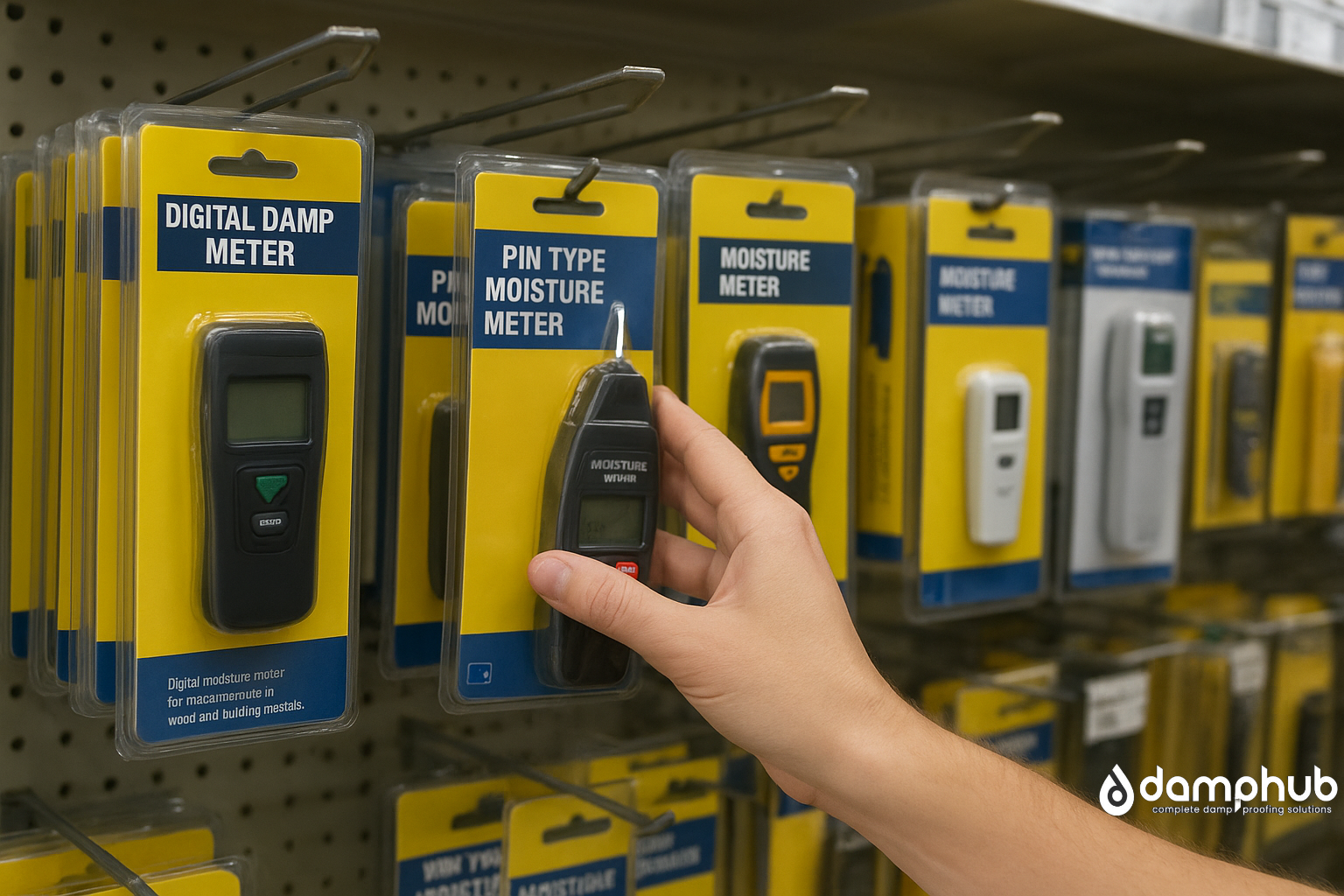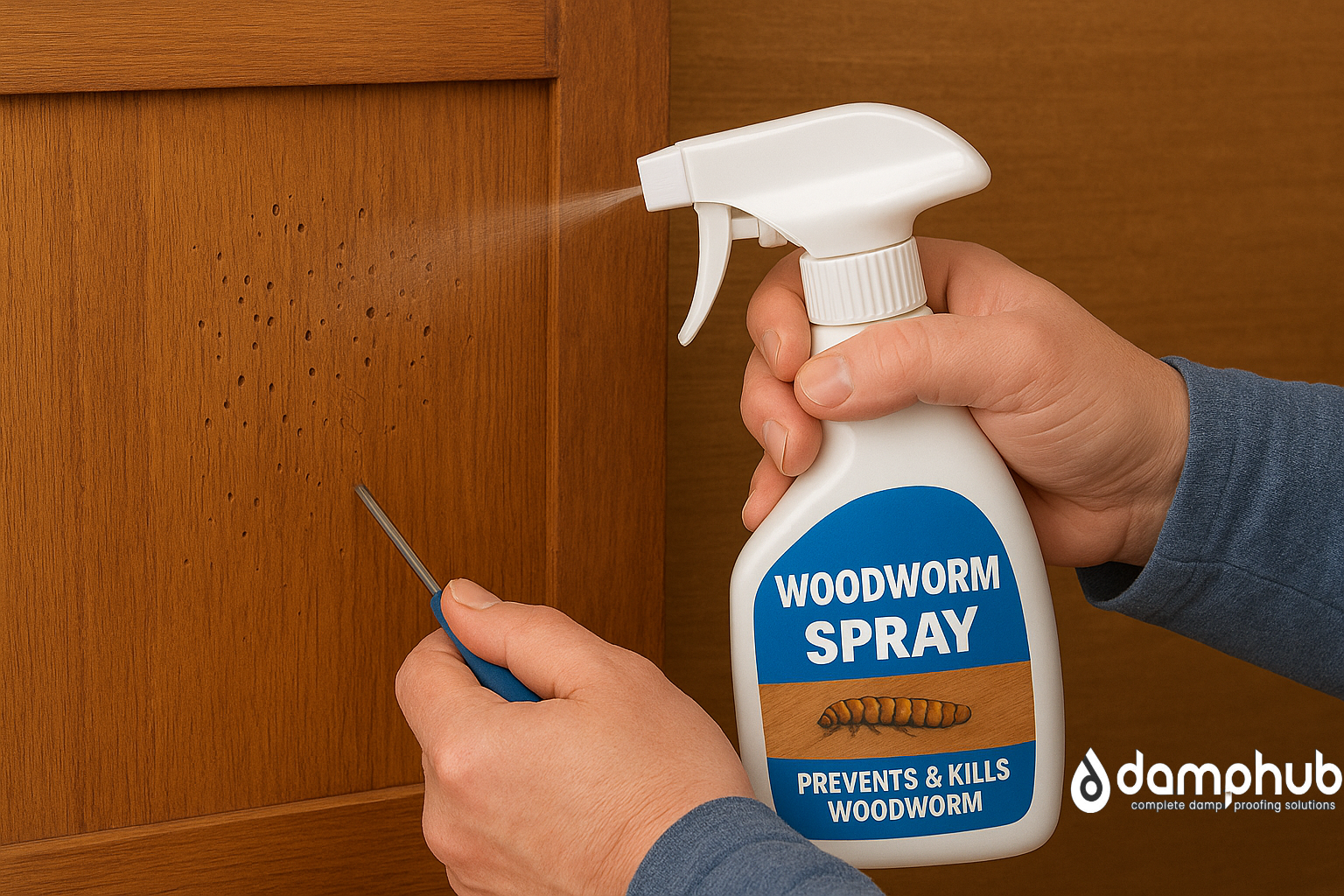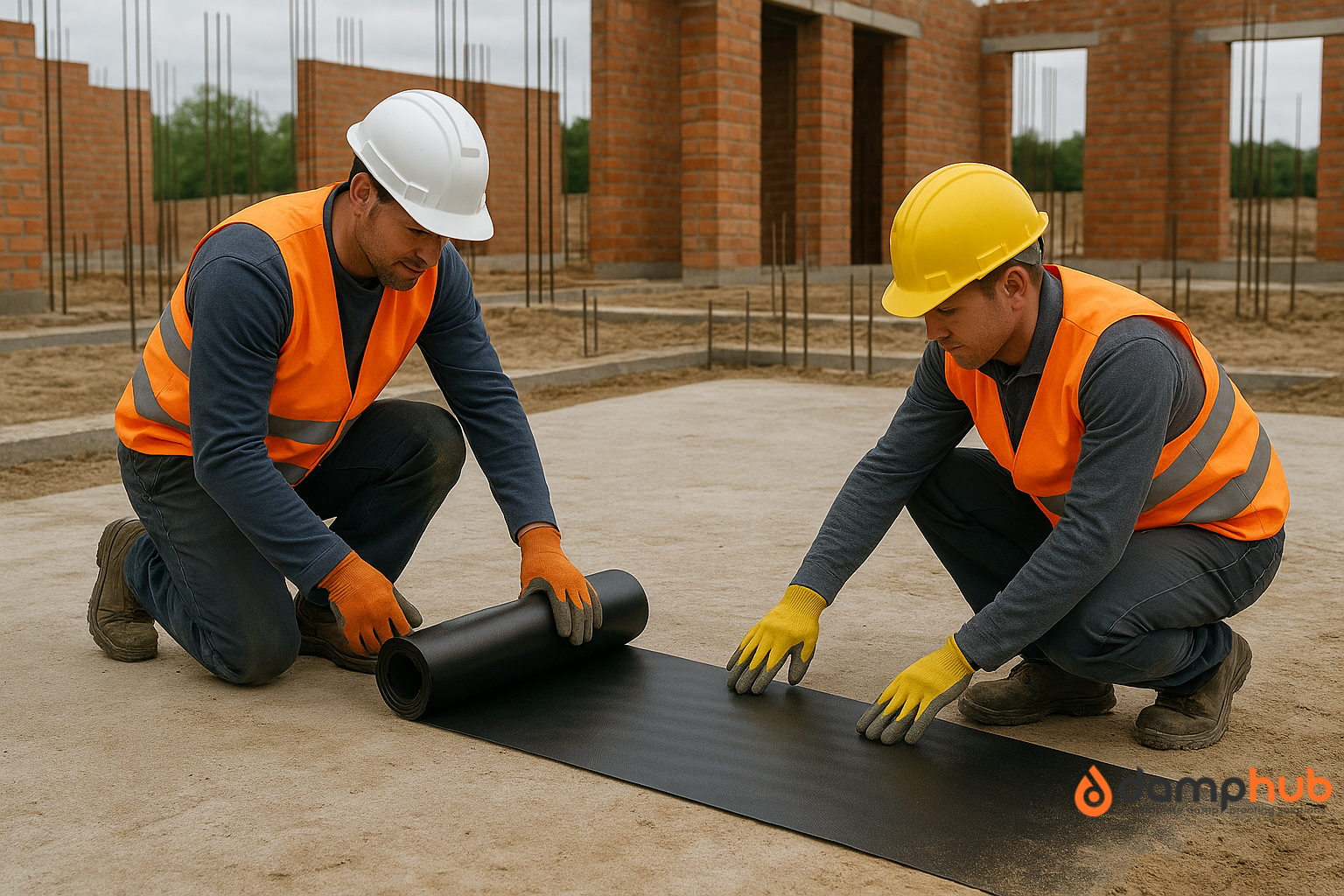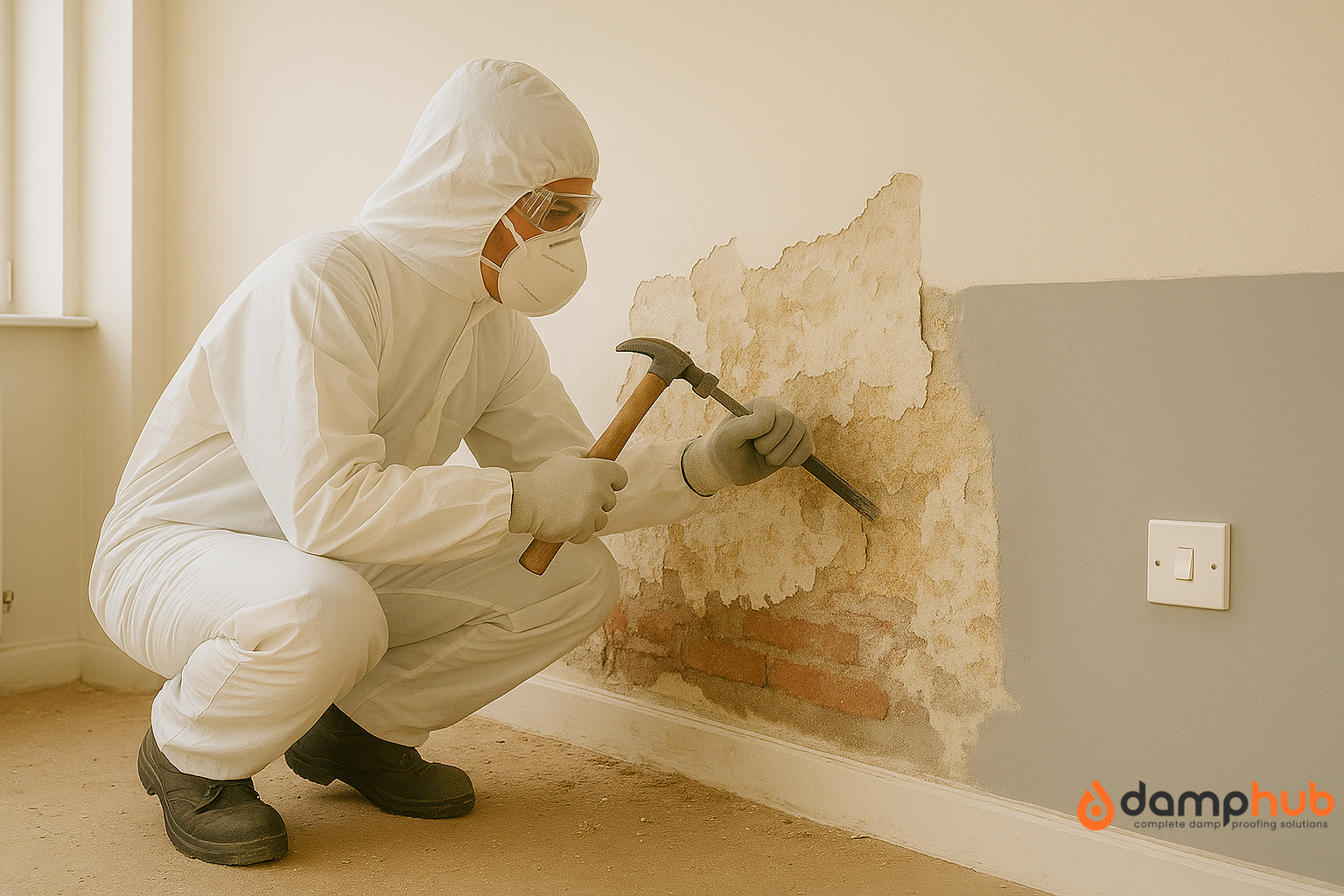
Noticing strange stains or damp patches on your walls?
Chances are, mould has made its way into your home.
This common issue thrives in moist, poorly ventilated spaces and can quickly become a health hazard if ignored.
But don’t worry—dealing with it doesn’t have to be hard.
Whether it’s on bathroom tiles or bedroom walls, using the right mould remover for walls can stop mould in its tracks.
In this complete guide, we’ll show you how to spot mould, why it appears, and which mould removers to use in the UK in case you ever have to deal with mould.
What is Mould
Mould is a type of fungus that grows in damp and humid environments.
It appears as fuzzy or slimy patches that can be black, green, grey, or even white.
Mould feeds on moisture and organic materials, which is why it often thrives on walls, ceilings, and other surfaces that stay wet or poorly ventilated.
Understanding what mould is and how it develops is the first step to effectively preventing and removing it from your home.
Please also read 👉 What Is Damp and Mould Compensation?

Recognising Mould on Your Walls
Before exploring the best mould remover in the UK, let’s see how you can identify the presence of mould on your walls.
Mould often manifests as discoloured spots—commonly black, green, or grey—with a fuzzy or slimy appearance.
It thrives in moist, poorly ventilated areas and may emit a musty smell.
Pay attention to areas near leaks, condensation, or high humidity.
👉 Related Blog: How to Remove Damp from Walls: The Ultimate Guide

Common Causes of Mould on Walls
Mould development on walls is typically due to:
- Elevated Humidity: Excess moisture in the air fosters mould growth.
- Leaks: Dripping pipes, roofs, or windows can keep walls damp.
- Inadequate Ventilation: Poor airflow traps moisture, especially in enclosed spaces like bathrooms or basements.
- Condensation: Warm air meeting cold surfaces creates water droplets that encourage mould.
- Flooding: Water damage from floods can saturate walls, leading to mould if not properly dried.

Risks of Neglecting Mould
Ignoring mould can result in several problems:
- Health Concerns: Exposure may lead to respiratory issues, allergies, asthma, skin irritation, and infections, particularly in individuals with weakened immune systems.
- Structural Damage: Mould can compromise walls, ceilings, and wooden structures, leading to costly repairs.
- Poor Indoor Air Quality: Mould spores can spread through the air, reducing air quality and causing unpleasant odours.
- Persistent Moisture Problems: Untreated mould often indicates underlying moisture issues that can worsen over time.
- Property Devaluation: Visible mould can diminish a property’s aesthetic appeal and market value.
Early intervention is crucial to mitigate these risks.
👉 Related Blog: Paint for Damp Walls in the UK | Damp Paints for Interior Walls

DIY vs. Professional Mould Removal: Choosing the Right Approach
DIY Mould Removal
For small, non-toxic mould infestations, such as surface mould on bathroom tiles or walls, DIY methods can be cost-effective.
Products like mould removal sprays or vinegar solutions are easy to use but require safety precautions, including gloves and masks.
Professional Mould Removal
For extensive mould growth, toxic black mould, or mould caused by underlying structural issues (like leaks), hiring a professional is safer and more thorough.
Experts can identify hidden mould, address the root cause, and use advanced techniques like HEPA filtration and antimicrobial treatments.
When to Use Mould Remover Products
Use mould remover products for minor mould spots on non-porous surfaces. If mould keeps reappearing or spreads to porous materials like drywall, it’s time to seek professional assistance.
Step-by-Step Guide: Effective Use of Mould Remover on Walls
- Prepare the Area
- Open windows for ventilation.
- Wear protective gloves, goggles, and a mask.
- Remove nearby furniture or cover it with a plastic sheet.
- Clean the Surface
- Wipe away loose dirt or dust with a damp cloth.
- For porous surfaces, assess if they can be treated or need replacement.
- Apply the Mould Remover
- Spray the product directly on the affected area.
- Let it sit for the recommended time (usually 5–10 minutes).
- Scrub and Rinse
- Use a stiff brush or sponge to scrub the mould off the wall.
- Rinse with clean water and dry the surface thoroughly with a cloth or fan.
- Dispose Safely
- Discard any used rags or sponges in a sealed bag.
- Aftercare
- Monitor the area for regrowth.
- Apply a mould-prevention spray if necessary.
👉 Related Blog: Best Mould Removers for Walls: How to Remove Mould From the Wall?
Top 5 Tips to Prevent Mould Growth on Walls
- Enhance Ventilation: Open windows or use exhaust fans, especially in high-moisture areas like kitchens and bathrooms.
- Use Dehumidifiers: Maintain indoor humidity levels below 60% to minimise moisture.
- Promptly Fix Leaks: Repair leaking pipes, roofs, or windows to prevent damp conditions.
- Insulate Cold Surfaces: Proper insulation reduces condensation on walls and ceilings.
- Regular Maintenance: Clean and inspect walls regularly for signs of dampness or mould. For added protection, use anti-mould paint in vulnerable areas.

Selecting an Effective Mould Remover for Walls
When choosing a mould remover for walls, consider the following:
- Active Ingredients: Look for products with antifungal agents like sodium hypochlorite, hydrogen peroxide, or benzalkonium chloride for effective mould-killing.
- Eco-Friendly Options: Choose non-toxic, biodegradable options if safety and environmental impact are concerns.
- Stain Removal: Products that kill mould and remove stains help restore walls.
- Ease of Use: Ready-to-use sprays or gel-based formulas that cling to vertical surfaces are more effective.
- Surface Compatibility: Ensure the product is safe for the wall material (e.g., painted, plastered, or tiled walls).
A safe and efficient mould remover should be non-corrosive, low in fumes, and safe for households with children or pets.
Top 10 Mould Removers for Walls in UK Homes
Here are expert picks for tackling mould, mildew, and musty walls—safely and effectively.
1. RMR-86 Instant Mould Stain Remover
A powerhouse cleaner, especially popular in the US but available in the UK online.
This fast-acting spray removes tough mould stains without scrubbing.
Perfect for landlords or homeowners tackling neglected walls, ceilings, or bathrooms.
- Best for: Heavy-duty cleaning, discoloured walls, and ceilings
- Why it stands out: Works in seconds, visibly erases black mould stains

2. HG Mould Spray
Hg mould remover is one of the UK’s most trusted mould removers.
Its chlorine-based formula makes it super effective on black mould, and the spray head offers easy, targeted application.
- Best for: The HG mould remover is best for Bathrooms, window frames, grout, and painted plaster
- Why it stands out: Affordable, reliable, and widely available

3. Dettol Antibacterial Mould & Mildew Remover
Combines mould removal with germ-killing power. Ideal for families or anyone concerned about hygiene. The formula cuts through soap scum and mould without the need to scrub.
- Best for: Kitchens, bathrooms, families with kids or pets
- Why it stands out: Removes mould and disinfects in one go

4. Concrobium Mould Control
Unlike bleach-based products, this non-toxic, odourless spray physically crushes mould at the root and leaves a barrier to prevent it from coming back.
A great choice for allergy-sensitive homes.
- Best for: Households avoiding harsh chemicals, long-term prevention
- Why it stands out: Eco-conscious and safe for people and pets

5. Clorox Mould & Mildew Remover
This classic bleach-based cleaner delivers quick results on visible black mould and stains, especially in high-moisture areas.
Use with caution on coloured walls—it’s strong!
- Best for: Tiles, bathtubs, sealed surfaces
- Why it stands out: Fast, powerful, and disinfecting

6. Kilrock Mould Remover Brush-on Gel
The Kilrock Mould Remover is a smart solution for vertical and awkward spaces like silicone sealant, window edges, and tile grout. The brush-on gel sticks in place and penetrates mould deep into corners.
- Best for: The Kilrock Mould Remover is best for the Edges of showers, windowsills, and behind taps
- Why it stands out: The Kilrock Mould Remover stands out for its dripping, precise mould targeting

7. Cif Mould Remover Spray
From a trusted UK brand, this cleaner works on a range of household surfaces.
It combines cleaning muscle with surface-safe formulation, so it won’t damage delicate materials.
- Best for: Painted walls, tiles, plastic trims
- Why it stands out: Balances strength with surface care
8. CLR Mould and Mildew Remover
Chlorine-free and fume-free, this formula is perfect if you hate that harsh bleach smell.
It works across multiple surfaces and won’t damage grout or tiles.
- Best for: Indoor walls, grout, painted areas
- Why it stands out: Strong cleaning without strong odour

9. Grout Mould Cleaner
Specifically designed for grout lines and porous surfaces, this cleaner penetrates deeply to eliminate mould at the root, then helps keep it from coming back.
- Best for: Between tiles, splashbacks, showers
- Why it stands out: Designed for long-term grout defence
10. Pro-Kleen Green Mould & Algae Remover
A huge 5L concentrate designed for large areas.
Spray it on and walk away—rain or rinse washes away the dead mould and algae over time.
Great for exteriors and stubborn growth.
- Best for: Outdoor walls, patios, garages
- Why it stands out: Covers huge areas, lasts for months
Cleaning Tip: Always wear gloves, ventilate well, and test products on a small area first.
For damp homes, pair with a dehumidifier to prevent mould from returning.

Common Mistakes When Using Mould Removers
Avoid these common errors to ensure safe and effective mould removal:
- Skipping Protective Gear: Not wearing gloves, masks, or goggles can expose you to harmful mould spores.
- Poor Ventilation: Failing to ventilate the area can trap spores and chemicals, worsening air quality.
- Using Ineffective Products: Household cleaners like vinegar may not be effective against all types of mould.
- Dry Scrubbing: Scrubbing dry mould can release spores into the air, increasing health risks.
- Ignoring the Source: Removing visible mould without fixing leaks or reducing humidity allows regrowth.
- Overusing Chemicals: Excessive use of harsh chemicals can damage walls and create toxic fumes.
- Neglecting Preventative Measures: Failing to improve ventilation or use anti-mould paint leads to recurring problems.
Follow proper procedures to ensure mould is eliminated and stays away.
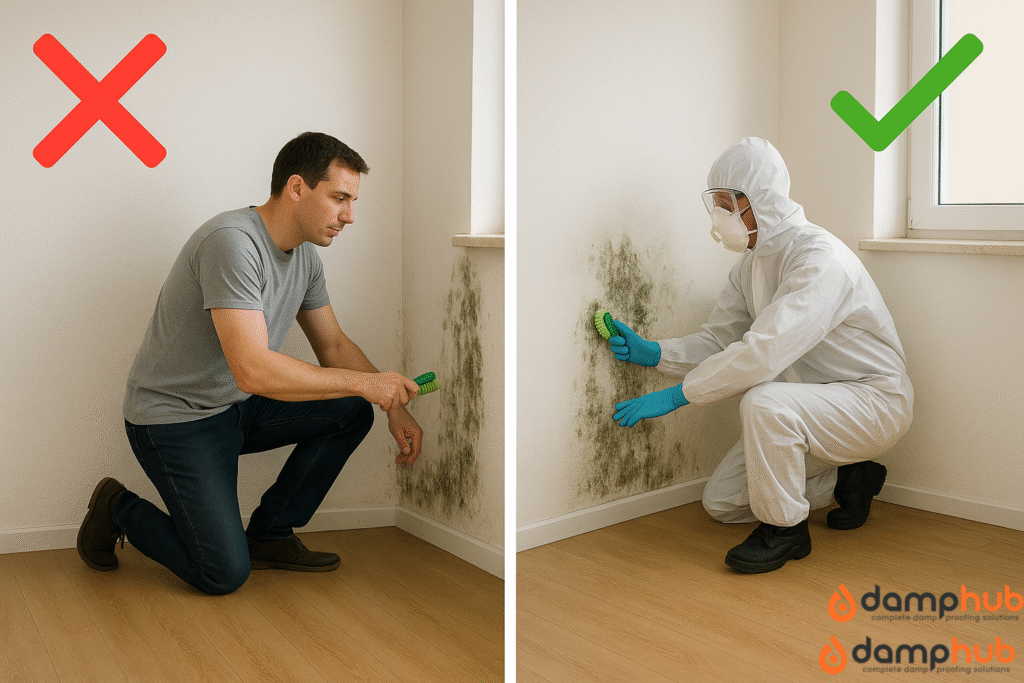
Frequently Asked Questions
What is the best way to remove mould from walls?
Use a mould remover with antifungal properties.
Apply it directly to the affected area, let it sit as instructed, then scrub and rinse. Ensure proper ventilation during the process.
Can I use household items like vinegar or baking soda to remove mould?
Yes, vinegar is an effective mould remover for light mould but may not work on severe infestations.
Baking soda can be used to deodorise and clean minor mould patches.
For tough cases, use a commercial remover.
Do I need to wear protective gear when removing mould?
Absolutely!
Wear gloves, a mask, and goggles to protect against mould spores and chemical exposure.
How can I prevent mould from returning after removal?
Fix leaks, improve ventilation, use a dehumidifier, and apply anti-mould paint or sprays to prevent regrowth.
Can mould be harmful to my health?
Yes, mould exposure can cause respiratory issues, allergies, and skin irritation, especially for individuals with asthma or weak immune systems.
What’s the difference between mould and mildew?
Mould is usually thicker, can appear in various colours, and grows on walls, ceilings, and wood.
Mildew is a powdery, lighter growth that appears on damp surfaces like tiles or fabrics.
Should I call a professional for mould removal?
For large infestations or toxic black mould, hiring professionals with specialised equipment and expertise is safer.


